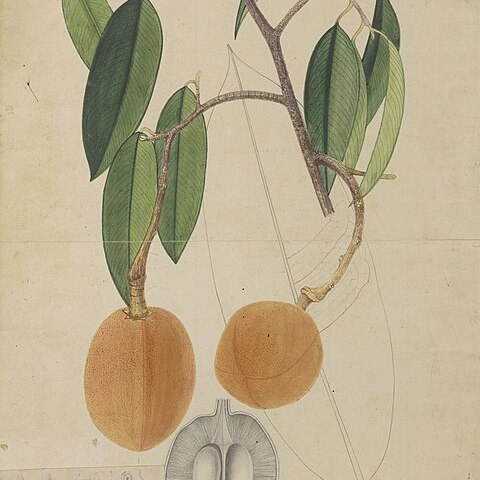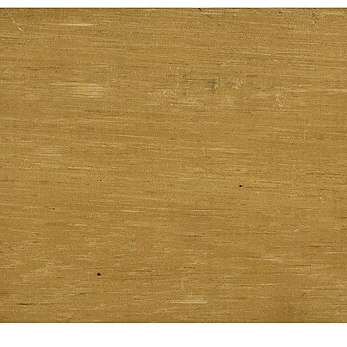Mostly tall trees, occasionally shrubs. Leaves alternate, chartaceous to very coriaceous, commonly with sparse persistent hairs below, especially on midrib; young parts sericeous, tomentose, or velutinous. Inflorescence paniculate (i.e. basically racemose), the main branches few, ± elongate, the lateral branches short, consisting of extremely condensed irregular nodulose racemes, often reduced to fascicles of flowers; or, in § Auxanthus, consisting of dense regular racemes of more or less unlimited growth. Bracts minute or, in § Auxanthus, small, falling very early. Flowers long-pedicelled. Calyx ± cupular, divided to about ⅓ or ¼; segments thick, tough, imbricate or sub valvate, slightly unequal (3 larger and 2 smaller), ± tomentose without, always densely hispid-setulose within. Corolla represented by a ring of 7-40 deltoid or subulate, rigid, erect or incurved, glabrous or retrorse-hispid, sometimes pustulate processes (referred to in the descriptions below as 'petals'), often ± shortly united below. Stamens about equal in number to the petals, rarely twice as many, inserted among the setulae at the base of the calyx; filaments very short and slender; anthers basifixed, broadly or narrowly oblong to obovate, doubled back over the top of the linear-tetragonal connective and de-current down its back, 4-locular at first, later 2-locular by confluence of adjacent pairs of locelli. Ovary sessile, ± globose, always densely hispid-setulose, (2-)3-4(-5)-locular (rarely 6-8-locular); style elongate, filiform, wiry, sinuate-contorted, glabrous or pubescent, very occasionally accompanied at the base by 3-7 small clavate or subglobose'parastyles'; stigma punctiform to capitate. Ovules solitary in each cell, pendulous from the apex, anatropous. Fruit a globose, or rarely (§ Auxanthus) lanceolate, woody, 2-5-valved, loculicidal (rarely indehiscent?) capsule, 1-5-seeded; mesocarp thick and fibrous, usually ± verruculose; exocarp thinly fleshy. Seeds large, with smooth softly coriaceous testa, and thin dorsal aril arising from the fleshy funicle; cotyledons large, horny.
More
Mostly tall trees, occasionally shrubs. Leaves alternate, chartaceous to very coriaceous, commonly with sparse persistent hairs below, especially on midrib; young parts sericeous, tomentose, or velutinous. Inflorescence paniculate (i.e. basically racemose), the main branches few, ± elongate, the lateral branches short, consisting of extremely condensed irregular nodulose racemes, often reduced to fascicles of flowers; or, in § Auxanthus, consisting of dense regular racemes of more or less unlimited growth. Bracts minute or, in § Auxanthus, small, falling very early. Flowers long-pedicelled. Calyx ± cupular, divided to about ⅓ or ¼; segments thick, tough, imbricate or sub valvate, slightly unequal (3 larger and 2 smaller), ± tomentose without, always densely hispid-setulose within. Corolla represented by a ring of 7-40 deltoid or subulate, rigid, erect or incurved, glabrous or retrorse-hispid, sometimes pustulate processes (referred to in the descriptions below as 'petals'), often ± shortly united below. Stamens about equal in number to the petals, rarely twice as many, inserted among the setulae at the base of the calyx; filaments very short and slender; anthers basifixed, broadly or narrowly oblong to obovate, doubled back over the top of the linear-tetragonal connective and de-current down its back, 4-locular at first, later 2-locular by confluence of adjacent pairs of locelli. Ovary sessile, ± globose, always densely hispid-setulose, (2-)3-4(-5)-locular (rarely 6-8-locular); style elongate, filiform, wiry, sinuate-contorted, glabrous or pubescent, very occasionally accompanied at the base by 3-7 small clavate or subglobose'parastyles'; stigma punctiform to capitate. Ovules solitary in each cell, pendulous from the apex, anatropous. Fruit a globose, or rarely (§ Auxanthus) lanceolate, woody, 2-5-valved, loculicidal (rarely indehiscent?) capsule, 1-5-seeded; mesocarp thick and fibrous, usually ± verruculose; exocarp thinly fleshy. Seeds large, with smooth softly coriaceous testa, and thin dorsal aril arising from the fleshy funicle; cotyledons large, horny.
Typically trees of the primary non-inundated rain-forest at low and medium elevations, reaching 1200 m in Sumatra and 1500 m in Borneo and the Philippines. G. bancanus, however, is a component of the (mainly coastal) freshwater swamps of the Malay Peninsula, Sumatra and Borneo, and it is possible that a second species occurs in this formation in Brunei; in such situations there is a development of pneumatophores. According to C. L. DURANT ( C. L. DURANT For. Rep. Brunei 1933 p. 7 ) G. hancanus (ramin) is invariably associated with Combretocarpus and Crypteronia.
More
Typically trees of the primary non-inundated rain-forest at low and medium elevations, reaching 1200 m in Sumatra and 1500 m in Borneo and the Philippines. G. bancanus, however, is a component of the (mainly coastal) freshwater swamps of the Malay Peninsula, Sumatra and Borneo, and it is possible that a second species occurs in this formation in Brunei; in such situations there is a development of pneumatophores. According to C. L. DURANT ( C. L. DURANT For. Rep. Brunei 1933 p. 7 ) G. hancanus (ramin) is invariably associated with Combretocarpus and Crypteronia.
Uses. The wood of most species seems relatively unimportant, but in recent years there has been considerable exploitation of that of G. bancanus—largely owing to this species sometimes occurring in pure stands—for internal building construction, planks, cases, etc. Export of ramin is estimated to constitute one third of the total timber export of Sarawak (cf. Mal. For. 14 1951 167, 231, 233 ). The use as incense, by the natives of Sumatra, Java and Borneo, of the (?due to fungal action) resin-impregnated heartwood, or kayu garu, has been known since the time of RUMPHIUS.
More
Uses. The wood of most species seems relatively unimportant, but in recent years there has been considerable exploitation of that of G. bancanus—largely owing to this species sometimes occurring in pure stands—for internal building construction, planks, cases, etc. Export of ramin is estimated to constitute one third of the total timber export of Sarawak (cf. Mal. For. 14 1951 167, 231, 233 ). The use as incense, by the natives of Sumatra, Java and Borneo, of the (?due to fungal action) resin-impregnated heartwood, or kayu garu, has been known since the time of RUMPHIUS.


